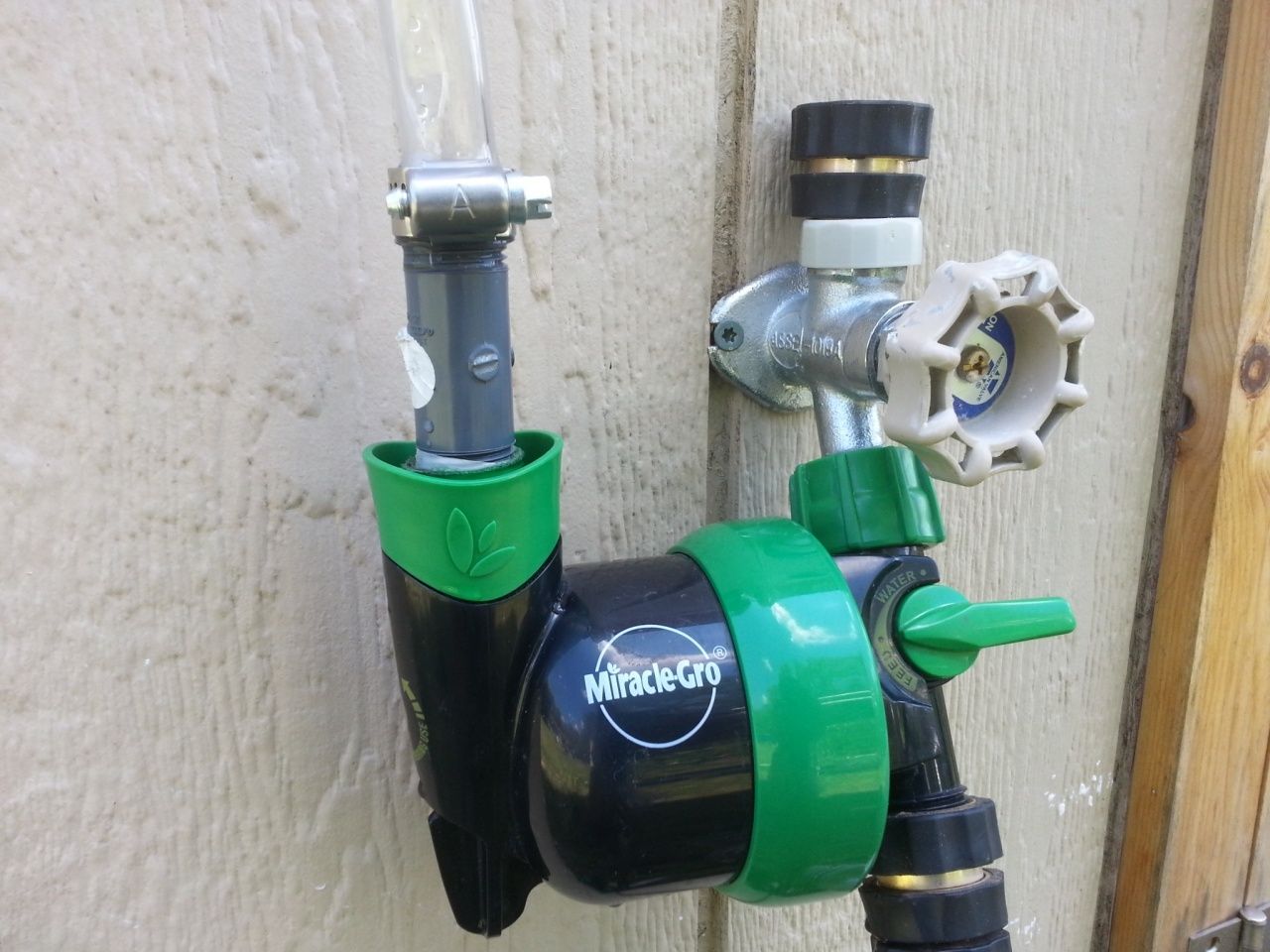I bought 2 venturi injectors to make my own 2 part fertilizer injection system. Unfortunately, I could not get them to produce suction. I think my flow rate through drip emitters was not high enough.
So instead I bought a Miracle Grow Liquafeed system.

I found out that I could grip the dosing mechanism on the feed bottle with pliers and pull it off so I could refill them.
My question is on fertilizer concentration.
I am using the Howard resh recommendations for pepper fertilization, and mixing everything myself.
I am alternating between a bottle of calcium nitrate, and a bottle of everything else because your not suppose to mix calcium nitrate with anything containing sulfur.
The bottle on the feeder is 16 oz, and empties completely in 1 watering. I am watering every other day for 2 hours through 1gph emitters. I have about 150 emitters hooked up to the system.
So after you take in all this info, what concentration should I mix my nutrients to go into the bottle?
To summarize, I'm putting down about 300 gallons every other day, and adding 16 oz of fertilizer.
1200:1 would give me full strength, but that seems extremely excessive, especially because that concentration is actually designed for a hydroponic reservoir, not soil where it will accumulate over time. I am thinking maybe 50:1, or even less...
Sent from my LGLS991 using Tapatalk
So instead I bought a Miracle Grow Liquafeed system.

I found out that I could grip the dosing mechanism on the feed bottle with pliers and pull it off so I could refill them.
My question is on fertilizer concentration.
I am using the Howard resh recommendations for pepper fertilization, and mixing everything myself.
I am alternating between a bottle of calcium nitrate, and a bottle of everything else because your not suppose to mix calcium nitrate with anything containing sulfur.
The bottle on the feeder is 16 oz, and empties completely in 1 watering. I am watering every other day for 2 hours through 1gph emitters. I have about 150 emitters hooked up to the system.
So after you take in all this info, what concentration should I mix my nutrients to go into the bottle?
To summarize, I'm putting down about 300 gallons every other day, and adding 16 oz of fertilizer.
1200:1 would give me full strength, but that seems extremely excessive, especially because that concentration is actually designed for a hydroponic reservoir, not soil where it will accumulate over time. I am thinking maybe 50:1, or even less...
Sent from my LGLS991 using Tapatalk


